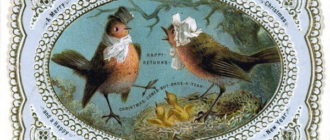
“Boulevard des Capucines” two paintings by Claude Oscar Monet (Oscar-Claude Monet) in the years 1873-1874. Each of them, from a high point of view and from the same angle, captures a view of the very heart of Paris a busy street, the perspective of which goes diagonally to the right, towards the Place de la Opéra Garnier.
Somewhere below, a stream of carriages and a motley crowd flashes. The figures of passers-by, like hieroglyphs, are indicated by cursory lines. The facades of the houses are partially covered with transparent branches of spreading plane trees. The glowing air mutes the architectural features of buildings, creates an airy effect and hides the depth of space. Written at different times of the year, the works differ in tonality, but they immerse the viewer in the atmosphere of the Parisian reality of the 1870s, convey the hidden rhythms, scale and majestic become of the city.
Author: Claude Monet (1840-1926).
Year of writing: 1873
Dimensions: 61 x 80 cm.
Style: Impressionism.
Genre: City landscape.
Technique: Oil painting.
Material: Canvas.
Location: State Museum of Fine Arts named after A.S. Pushkin, Moscow.

Claude Monet famous 19th century French painter, founder of impressionism
He is the author of the painting, which, by the will of fate, gave the name to this artistic movement. In his works, the master conveys the mood and impression, an intense and temperamental perception of nature.
He is not interested in the historical sights of Paris, he is far from scrupulous descriptions. The artist is attracted by momentary sensations, the connection of the landscape with natural processes, sunlight, unstable spring conditions.
Unlike early static works, the Boulevard des Capucines paintings are filled with dynamics, the accelerated pace of life and the daily bustle of the new Paris. The first work, also known as Carnival on Boulevard des Capucines, portrays the city in all its festivity. The powerful color contrasts of small bright spots create a distinctive sense of color noise.
The rhythm is set by small and light strokes, which fold into larger planes and form an integral, solemn impression. But the atmosphere of a holiday and stormy city life is conveyed only in the most general expression. Light divides the picture diagonally: the warm golden rays of the sunny side of the boulevard contrast sharply with the cool transparent greenish shadow. A single light-air haze gives restrained tonal harmony to the whole landscape.
Claude Monet’s Boulevard des Capucines paintings an instant look at the hustle and bustle of Paris
On the right, at the very edge of the picture, the master focuses on distinct images of men standing on the balcony, contemplating the bustle of life. But it cuts off their figures, thereby depriving the work of the natural framing adopted in the classical canons of fine art. The second version of Boulevard des Capucines is distinguished by its vertical format and a different mood.
On a canvas measuring 80.3 x 60.3 cm, the artist depicted a gloomy winter landscape, when a dull whitish light reflects from a wet pavement and creates a vibration in the air, and the cold sun glides over the bare branches of trees. The measured movement of the street is conveyed by sharp spots of black, pink and dark green against a pale milky hue. The work is currently housed at the Nelson-Atkins Museum of Art in Kansas City, USA.
Pictures “Boulevard des Capucines” by Claude Monet, presented at the exhibition of the Impressionists in 1874, at first provoked aggressive criticism and misunderstanding of the public. Only after a while they took a worthy place in world art, returning to subsequent generations the piercing feeling of the true Paris of the seventies of the XIX century, in which unusual and impetuous rhythms were increasingly identified with a new and daring artistic vision.






